Left the carrots and raisins to mingle with brown sugar overnight, the result was pure magic!
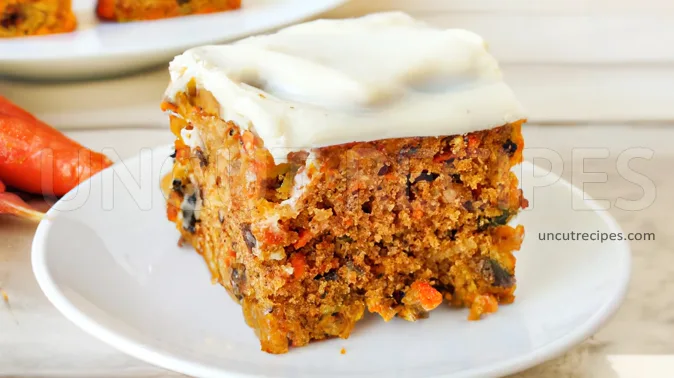
Ever wondered what it feels like to be a culinary adventurer? To voyage beyond the known tastes and textures, unlocking mysteries that reside in the most basic of ingredients? That's precisely the kind of quest our Best Moist Carrot Cake Ever Recipe invites you on.
Imagine you're not in your everyday kitchen, but an alchemist's lab. Your ingredients? Ordinary items like carrots, flour, and sugar. But in your hands, they transform, turning into extraordinary, mouthwatering magic.
Carrots, those humble root vegetables, usually associated with hearty soups and salads, become the star of this show. Left to sit in brown sugar, they transmute into something sweet, flavorful, and absolutely magical - the golden heart of this cake.
This culinary journey carries on, with each step revealing new transformations. The eggs and sugar, whipped together, become a silky potion. Adding the exotic notes of vanilla and the sweet crunch of walnuts, you're stirring a cauldron of enchanting flavors and textures.
And then comes the baking, the final act of our spellbinding spectacle. As the cake rises in the oven, it's not merely cooking; it's evolving into its delicious destiny. The result is a moist, delectable creation, an ode to the incredible voyage you've embarked upon.
Our Best Moist Carrot Cake Ever Recipe isn't just about baking a cake; it's about embracing the beauty of transformation, the thrill of creation, and the delight of discovering uncharted territories of taste. So, let's set sail on this exciting culinary adventure!
JUMP TO:
INGREDIENTS:
Carrots: freshness is paramount. Look for firm, bright-colored carrots with smooth skin. Avoid any that appear wilted or rubbery, as these are signs of age. Grating them at home ensures the maximum flavor and moisture, as pre-packaged grated carrots can often be dry.
Vegetable Oil: A neutral oil like canola or sunflower is recommended. They keep the cake moist without adding any additional flavor. If you're looking for a healthier alternative, you can use the same amount of unsweetened applesauce.
Crushed Pineapple: This ingredient provides additional sweetness and moisture. Go for canned crushed pineapple in juice, not syrup, to avoid excessive sweetness. If pineapple isn’t your thing, you can leave it out.
Walnuts: These add a delightful crunch to your cake. Be sure to choose fresh walnuts. If you’re not a fan of walnuts, feel free to substitute with pecans or almonds.
Ground Cinnamon: It gives a warm, aromatic flavor that pairs perfectly with carrots. Quality and freshness are key here, so if your cinnamon has been sitting in the cupboard for a while, it may be time for a replacement.
Vanilla Extract: Opt for pure vanilla extract over the imitation varieties for a superior flavor. If you're feeling adventurous, you could substitute the extract with scraped vanilla beans or vanilla bean paste for a more intense flavor.
MAIN STEPS:
Carrot Preparation: This cake starts with the all-important carrots. Their grated texture is crucial to the moist crumb of the cake. Grate the carrots finely to ensure even distribution throughout the batter, but not so fine as to become a puree. Allowing them to sit with the brown sugar for an hour draws out the carrot juices, enhancing the overall flavor of the cake.
Cake Pans Preparation: Don't underestimate the importance of properly preparing your cake pans. A well-greased and floured pan will ensure your cake comes out cleanly and maintains its beautiful shape.
Mixing the Wet and Dry Ingredients: The key to a light, tender cake is not overmixing the batter. Once you begin to add the dry ingredients to the wet, mix until just combined. Overmixing can lead to gluten development in the flour, which might result in a tougher cake.
Adding the Carrots and Walnuts: Remember, this is a carrot cake, so you want the flavor and texture of the carrots to shine through. The walnuts should be coarsely chopped for a pleasant crunch and to ensure they distribute well in the batter.
Baking the Cake: Pay close attention to your baking time. Every oven is a bit different, and overbaking can dry out your cake. Start checking the doneness around the 40-minute mark with a toothpick. It should come out clean or with a few moist crumbs.
Cooling the Cake: Resist the temptation to remove the cakes from their pans immediately. Let them cool for at least 10 minutes to avoid the cake layers from breaking apart. Once you've gently removed them from the pans, let them cool completely before frosting. This prevents the frosting from melting into the cake and allows the cake flavors to fully develop.
SERVED WITH:
Starter: Caprese Salad (Italy): A simple, fresh salad made from ripe tomatoes, mozzarella cheese, and fresh basil, seasoned with salt, and drizzled with olive oil and possibly balsamic vinegar. This is a great starter to balance the sweetness of the carrot cake, bringing in a savory element to your meal.
Side Dish: Honey Glazed Carrots (United States): Cooked carrots that have been caramelized in a glaze made from honey, butter, and a hint of cinnamon. This dish is a delightful way to highlight carrots in your meal and offer a sweet but savory precursor to the carrot cake.
Main Course: Chicken Piccata (Italy): A dish that includes chicken breasts that are dredged in flour, browned, and served with a sauce of butter, lemon juice, capers, and either stock or white wine. The tangy, savory flavors of this main course provide a nice counterbalance to the sweetness of the carrot cake.
Main Course: Baked Salmon with Dill (Sweden): A dish that consists of salmon fillets seasoned with fresh dill, lemon, and salt, then baked to perfection. This light and nutritious main dish would be an excellent partner to our hearty carrot cake.
Dessert: Lemon Sorbet (France): A refreshing dessert made from lemon juice, sugar, and water. The bright, tart flavors of this sorbet would provide a wonderful contrast to the warm, spiced notes of the carrot cake.
Cake: Chocolate Lava Cake (France): A popular dessert that combines the elements of a chocolate cake and a soufflé. Its name derives from the dessert's liquid chocolate center, and it's a decadently rich complement to our moist carrot cake.
Drink: Chai Latte (India): A creamy, warming drink made with spiced tea (chai), sugar, and steamed milk. The spice profile in the chai latte would echo the warm spices in the carrot cake, making it the perfect beverage pairing.
ALTERNATIVES:
Bread: Carrot Pineapple Bread (United States): This moist and flavorful quick bread uses the classic combination of carrots and pineapple, along with similar spices to our carrot cake, but baked in a loaf pan for an easy breakfast or snack.
Dessert: Cinnamon Raisin Rice Pudding (Spain): A creamy and comforting dessert made with Arborio rice, milk, sugar, cinnamon, and raisins. This dish uses several ingredients from our carrot cake, but the result is a totally different, yet still delicious, sweet treat.
Dessert: Carrot Halwa (India): Also known as gajar ka halwa, this is a sweet dessert pudding made with grated carrots, sugar, milk, ghee, and often garnished with nuts. Its flavors echo those of a carrot cake, but its consistency and method of preparation make it a unique dish.
Cookies: Carrot Cake Cookies (United States): These soft, chewy cookies have all the flavors of carrot cake – cinnamon, walnuts, and of course, carrots – but in a handheld format. Often, they're sandwiched together with cream cheese frosting for a delicious twist on the classic cake.
Salad: Carrot Raisin Salad (United States): This refreshing salad uses grated carrots and raisins, dressed in a sweet and tangy pineapple juice dressing. It's a perfect side dish that uses similar ingredients to our carrot cake but offers a light and fresh alternative.
Main Course: Sweet Carrot and Nutty Quinoa Salad (Morocco): This salad uses grated carrots, a blend of spices, raisins, and walnuts mixed with cooked quinoa. It's a nutritious and flavorful dish that incorporates some of the main ingredients of our carrot cake.
Drink: Carrot Cinnamon Smoothie (Global): This healthy smoothie uses carrots, a dash of cinnamon, and a sweetener like honey or maple syrup. It's a nutritious and refreshing way to enjoy the flavors of carrot cake in a drinkable form.
HISTORY:
While today's Best Moist Carrot Cake Ever Recipe is associated mostly with North American cuisine, the roots of this dessert actually reach back centuries and continents. It's said to have origins dating back to the Middle Ages when sweeteners were often hard to come by. Resourceful cooks turned to carrots, known for their natural sweetness, to make their puddings and sweet pies.
Fast forward to the World War II era, where carrots found their way back into sweet dishes out of necessity. Rationing was widespread, and with sugar in short supply, homemakers in Britain were encouraged to use carrots as a substitute in their baked goods. The Ministry of Food even promoted recipes for carrot pudding, carrot-filled pies, and yes, carrot cake.
But how did the humble carrot cake become the indulgent layered delight we know and love today? Its popularity soared in the United States during the health food movement of the 1960s. Carrot cake was seen as a "healthy" cake due to its namesake vegetable ingredient. By the 1970s, carrot cake was everywhere, from upscale restaurants to family kitchens.
The cream cheese frosting that's practically synonymous with carrot cake today was actually a later addition to the recipe. It’s generally believed to be a 20th-century American innovation, a tangy, creamy contrast to the sweet, spiced cake.
The Best Moist Carrot Cake Ever Recipe we bake today—with its lush layers filled with sweet, spiced carrot and nut batter, crowned with a rich cream cheese frosting—has evolved considerably from its simple beginnings. Yet it retains the resourcefulness and creativity of those early cooks who first saw the potential in a humble root vegetable.
Today, variations of carrot cake are baked worldwide, reflecting local flavors and ingredients. In Brazil, a version known as "bolo de cenoura" is often topped with a chocolate glaze. Meanwhile, the Swiss make their version, "rüeblitorte", with ground almonds.
TIPS:
Grating Carrots: Using a box grater can lead to a coarser texture for your carrots, which adds a slight crunch to your cake. For a softer texture, you might consider using a food processor with a grating attachment. Remember, the finer the carrot, the more evenly it will distribute throughout the cake, adding to the overall moistness.
Spices: The ground cinnamon in this recipe offers a warm, sweet-spicy flavor that complements the carrots. But don't be afraid to experiment with other warming spices. A pinch of nutmeg, cardamom, or cloves can add an intriguing twist to your carrot cake.
Nuts Roasting: The chopped walnuts contribute a delightful crunch and rich flavor to the cake. For an even more robust flavor, consider lightly toasting the walnuts before adding them to the batter. Toasting nuts deepens their flavor and also enhances their crunch.
Cake Testing: The classic method of inserting a toothpick into the cake to check its doneness is tried and true, but for an even more accurate test, use an instant-read thermometer. A fully baked cake will register around 210°F (99°C) at its center.
Cooling: Don't rush the cooling process. Let the cakes rest in their pans for about 10 minutes, but then remove them from the pans to prevent the cakes from becoming overly moist or even soggy from the heat that is trapped in the pan. Cooling on a wire rack allows air to circulate and cool the cake evenly.
Infuse Your Sugar: Enhance the depth of sweetness by infusing your white and brown sugar with spices or citrus zest. Simply add your favorite spices or zest to the sugar, stir it around, and let it sit for a few hours or overnight before using. This adds an extra layer of flavor to your cake.
Carrot Juice: Instead of discarding the juice that comes out of your carrots when you grate them, consider reducing it on the stove into a thick syrup and adding it back into the batter. It'll intensify the carrot flavor and add to the moistness of the cake.
Clarified Butter: Replace the vegetable oil with clarified butter for a richer, deeper flavor. Clarified butter has a higher smoke point than regular butter and adds a creamy, toasty flavor to baked goods.
Pineapple Reduction: Similar to the carrot juice tip, consider reducing the juice from the crushed pineapple to a syrup and adding it to the batter. It'll give your cake a more pronounced pineapple flavor without adding extra moisture that could affect the cake's texture.
Candied Walnuts: For a gourmet touch, use candied walnuts instead of regular ones. They add a sweet crunch that pairs beautifully with the moist carrot cake.
Salt Sprinkling: After the cake has cooled and before frosting, consider lightly sprinkling the top of the cake with a high-quality flaky sea salt. The salt enhances the sweet flavors of the cake and adds a hint of crunch.
Recipe Information
Skill Level
|
Time 2h 15 Minutes |
Price
|
Serves 16 People |
| Healthiness |
Nutritional Information |
| Ratings (Add Rating & Review) |
Reviews 24 Reviews |
Ingredients:
-
6 cups grated Carrots
3 cups All-Purpose Flour
1.5 cups White Sugar
1 cup Brown Sugar
1 cup Vegetable Oil
4 medium Eggs
1 cup crushed Pineapple
( drained )
1 cup Raisins
1 cup chopped Walnuts
4 teaspoons Ground Cinnamon
2 teaspoons Vanilla Extract
1.5 teaspoons Baking Soda
1 teaspoon Salt
Allergens
| Eggs | Gluten | Nuts |
Directions:
01 - Preparing the Carrots. In a medium bowl, combine grated Carrots and Brown Sugar. Mix well, cover with cling film and let this mixture sit for about an hour at room temperature.
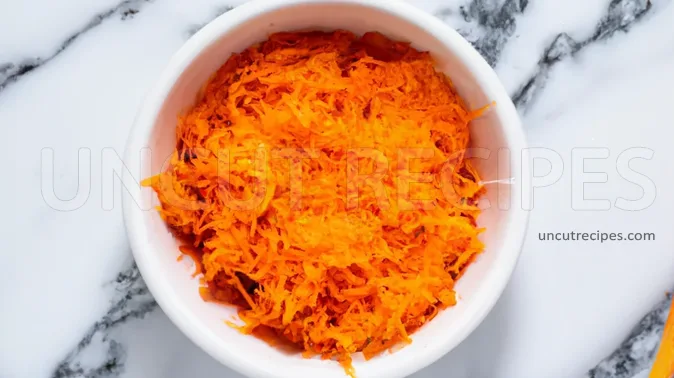
02 - After an hour, stir in the Raisins. Cover with cling film and set aside.
03 - Preparing the Cake Pans: While the carrots and raisins are sitting, preheat your oven to 175C / 350F degrees.
04 - Grease and Flour your round cake pans.
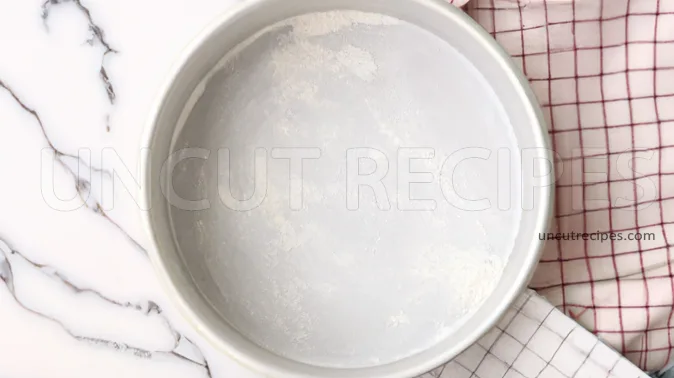
05 - Preparing the Wet Ingredients: In a large bowl, crack the Eggs and beat them until they're light in color and slightly frothy.

06 - Gradually beat White Sugar, Vegetable Oil and Vanilla Extract, making sure to mix well after each addition.
07 - Stir in the drained, crushed Pineapple.
08 - Mixing the Dry Ingredients: In a separate bowl, combine All-Purpose Flour, Ground Cinnamon, Baking Soda and Salt. Stir well to combine.
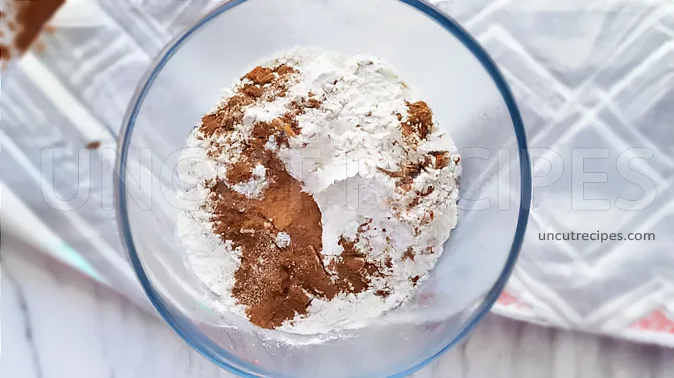
09 - Combining Wet and Dry Ingredients: Now it's time to slowly stir the dry ingredients into the Egg mixture. Keep stirring until the dry ingredients are completely absorbed into the wet ingredients.
10 - Adding Carrots and Walnuts: Stir in the Carrot and Raisin mixture and chopped Walnuts into the Batter. Ensure it's well mixed.

11 - Baking the Cake: Pour the Batter evenly into your prepared cake pans.

12 - Place in the preheated oven and bake for about 45 minutes. You'll know the Cake is done when a toothpick inserted into the center comes out clean.
13 - Cooling the Cake: Once baked, allow the Cakes to cool in the pans for about 10 minutes. After that, remove the Cake layers from the pans and let them cool completely before frosting or serving.
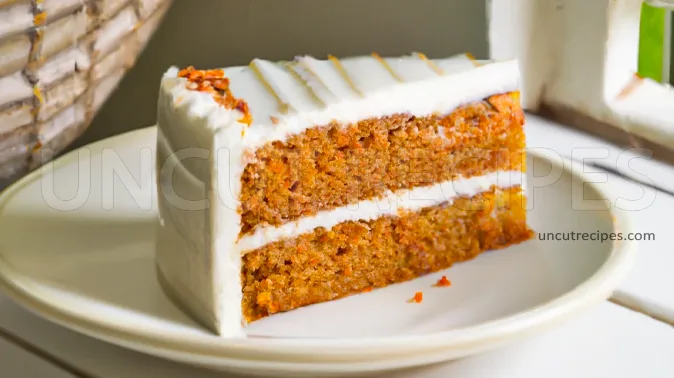
Notes:
Carrot Prep: When grating the carrots, aim for medium shreds, not too fine or too large. This ensures a nice texture in the final cake.
Brown Sugar Substitute: If you don't have brown sugar, you can substitute it with white sugar and 1 tablespoon of molasses for each cup of sugar. It will slightly change the flavor, but not drastically.
Pan Prep: You can also use parchment paper for lining the cake pans to ensure easy removal of the cake layers.
Eggs: Make sure your eggs are at room temperature for the best results. Cold eggs could result in a denser cake.
Pineapple: If you don't have crushed pineapple, you can substitute with applesauce or mashed bananas, but keep in mind the flavor profile will slightly alter.
Nut-Free Version: If you have a nut allergy, the walnuts can be omitted. If you want a crunch, you could add some shredded coconut or sunflower seeds instead.
Cooling: Make sure your cake is thoroughly cooled before frosting, otherwise, the frosting will melt and slide off.
Storing: Once frosted, this cake can be stored in an airtight container in the fridge for up to a week. Be sure to let it come to room temperature before serving for the best flavor.
Freezing: If you want to make this cake ahead of time, you can freeze the individual layers. Once they are completely cooled, wrap them tightly in plastic wrap and then in aluminum foil. They can be frozen for up to 3 months. Defrost in the refrigerator overnight before assembling and frosting.
Frosting: This cake pairs well with cream cheese frosting, but feel free to try it with your favorite frosting. You could also dust it with powdered sugar for a simpler finish.
Nutritional Information
( Per Portion )
|
Calories |
588 kcal (29.4%) |
| Total Carbohydrate | 80.5g (27%) |
| Cholesterol | 93mg (31%) |
|
Total Fat |
22.3g (34%) |
| Saturated Fat | 2.5g (13%) |
| Polyunsaturated Fat | 12.2g |
| Monounsaturated Fat | 5.6g |
| Trans Fat | 0g |
| Fibers | 4.2g (17%) |
| Protein | 8.1g (16%) |
| Sugar | 37.9g (151.6%) |
|
Vitamin A |
11293 IU (375%) |
|
Vitamin B1 (Thiamin) |
0.26mg (22%) |
| Vitamin B2 (Riboflavin) | 0.18mg (14%) |
| Vitamin B3 (Niacin) | 1.86mg (12%) |
| Vitamin B5 (Pantothenic Acid) | 0.87mg (17%) |
| Vitamin B6 | 0.27mg (20%) |
| Vitamin B7 (Biotin) | 3.2mcg (11%) |
| Vitamin B9 (Folate) | 32mcg (8%) |
| Vitamin B12 | 0.15mcg (6%) |
| Vitamin C | 5.3mg (7%) |
| Vitamin D | 9.6 IU (2%) |
| Vitamin E | 2.9mg (19%) |
| Vitamin K | 10.7mcg (9%) |
| Choline | 45.1mg (8%) |
| Carnitine | 0.8mg |
|
Calcium |
52.1mg (4%) |
|
Chloride |
44.6mg (1%) |
| Chromium | 3.8mcg (11%) |
| Copper | 0.36mg (40%) |
| Fluoride | 1.7mcg |
| Iodine | 7mcg (5%) |
| Iron | 2.8mg (15%) |
| Magnesium | 46.7mg (11%) |
| Manganese | 0.6mg (26%) |
| Molybdenum | 4.8mcg (10%) |
| Phosphorus | 146.3mg (21%) |
| Potassium | 367.2mg (8%) |
| Selenium | 10.5mcg (19%) |
| Sodium | 1126.9mg (49%) |
| Sulfur | 30mg |
| Zink | 0.8mg (7%) |
* Percent Daily Values are based on a 2,000 calorie diet. Your daily values may be higher or lower depending on your calorie needs.
** Nutrient information is available for all ingredients in this recipe. Amount is based on available nutrient data collected from all over the internet.
(-) Information is not currently available for this nutrient. If you are following a medically restrictive diet, please consult your doctor or registered dietitian before preparing this recipe for personal consumption. |
| Written by: Uncut Recipes | Disclaimer |










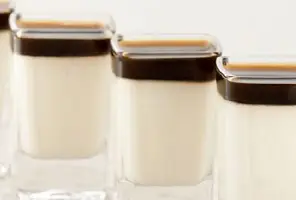
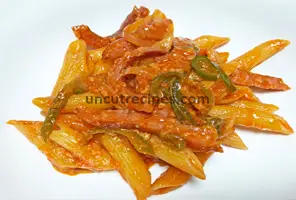

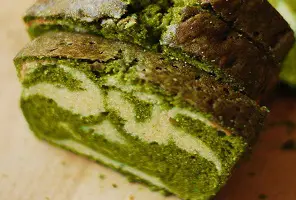
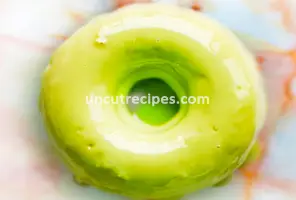



June 29, 2023
A delectable delight, simply irresistible!